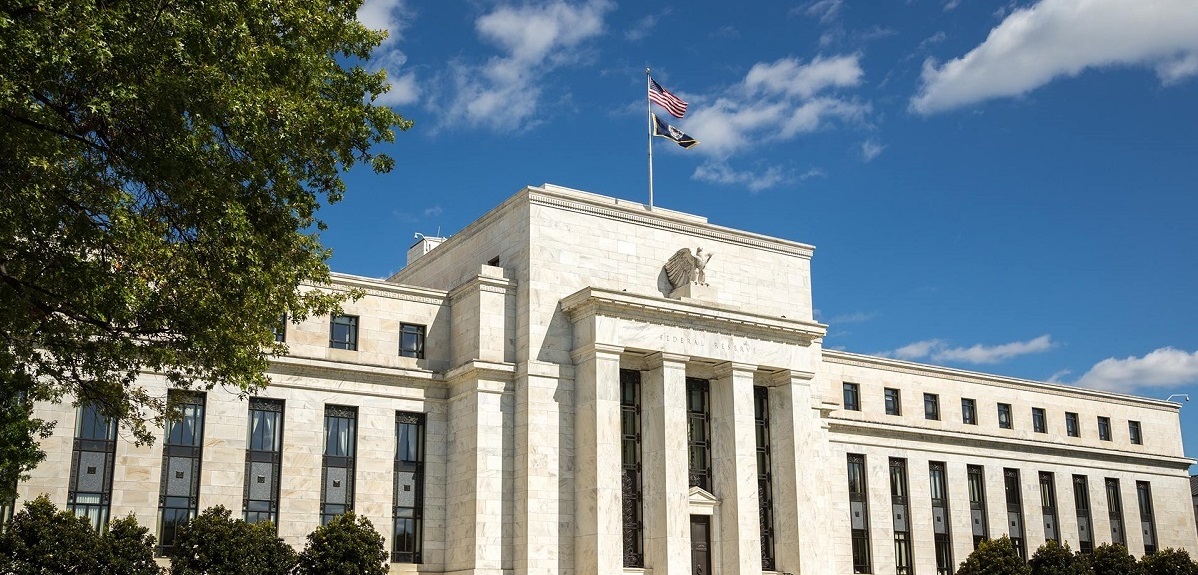Introduction
The banking system plays a crucial role in modern economies, serving as the backbone of financial transactions and economic development. It provides essential financial services to individuals, businesses, and governments, enabling them to save, borrow, invest, and manage their money effectively. Understanding the banking system is key to comprehending the dynamics of the economy and the interconnectedness of various financial institutions.
At its core, the banking system is a network of institutions that facilitate the flow of funds within an economy. It includes central banks, commercial banks, investment banks, credit unions, and other financial institutions. These entities work together to provide a range of services such as accepting deposits, extending loans, facilitating payments, and managing risks.
The history of banking dates back centuries, evolving from simple moneylenders and temples in ancient civilizations to the sophisticated and digitally-driven systems we have today. The development of banking was influenced by economic and political factors, leading to the establishment of regulated and organized financial systems that we see today.
In this article, we will delve into the intricacies of the banking system, exploring its history, various types of banks, functions and roles, significance in the economy, regulatory frameworks, and the challenges it faces.
What Is the Banking System?
The banking system refers to the network of financial institutions, both public and private, that are responsible for managing and facilitating the flow of money in an economy. It is a complex system that provides essential financial services to individuals, businesses, and governments.
At its core, the banking system enables individuals and businesses to deposit money, obtain loans, make payments, and engage in various financial transactions. It acts as an intermediary between those who have excess funds (savers) and those who need funds (borrowers).
One of the primary functions of the banking system is to accept deposits from customers, which can be in the form of savings accounts, current accounts, or fixed deposits. These deposits serve as the lifeblood of banks, as they provide them with the necessary funds to lend to borrowers.
Another crucial aspect of the banking system is the provision of loans and credit. Banks play a pivotal role in channeling funds from savers to borrowers, providing individuals and businesses with the financial resources needed for various purposes such as starting a business, buying a home, or funding education.
In addition to accepting deposits and providing loans, the banking system also facilitates payments and transfers. Through the use of payment instruments such as checks, debit cards, credit cards, and online banking platforms, individuals and businesses can conveniently make transactions and settle their financial obligations.
Furthermore, the banking system offers a range of other services, including wealth management, investment advisory, foreign exchange services, and trade finance. These services cater to the diverse financial needs of customers and contribute to the efficient functioning of the economy.
Overall, the banking system acts as a crucial intermediary in the economy, connecting surplus funds with deficit funds and enabling the smooth flow of money between savers and borrowers. By providing essential financial services, it plays a vital role in promoting economic growth, facilitating investment, and fostering financial stability.
History of the Banking System
The history of banking can be traced back to ancient civilizations, where the concept of lending and borrowing money existed in rudimentary forms. In ancient Mesopotamia, temples provided a safe place for people to store their valuables, including grain and precious metals. Over time, these temples also began to offer loans to individuals and merchants.
In ancient Greece and Rome, moneylenders and bankers emerged as key players in financial transactions. They would accept deposits, provide loans, and engage in currency exchange activities. However, it wasn’t until the Middle Ages that formal banking practices began to take shape.
During this time, powerful families and merchant guilds in Italian city-states such as Venice, Genoa, and Florence started offering banking services. These early banks provided a safe space for wealthy individuals to deposit their funds and issued bills of exchange, serving as a precursor to modern-day banknotes.
The development of the modern banking system as we know it today can be largely attributed to the establishment of central banks and the advent of fractional reserve banking. The Bank of England, founded in 1694, was the first central bank. It acted as the lender of last resort and started issuing banknotes that were backed by gold reserves.
During the Industrial Revolution in the 18th and 19th centuries, banking systems evolved further. Advances in technology, such as the invention of the telegraph and the establishment of national banking systems, transformed the way banks operated. They were able to expand their operations, offer more sophisticated services, and facilitate economic growth.
In the 20th and 21st centuries, banking has undergone significant changes driven by globalization, technological advancements, and regulatory reforms. The rise of digital banking has revolutionized the way customers interact with banks, making services more accessible and convenient.
Today, the banking system is a complex network of financial institutions that play a vital role in the global economy. It has become heavily regulated to ensure financial stability and protect the interests of customers. The history of banking serves as a testament to its adaptability and resilience in the face of changing economic and societal landscapes.
Types of Banks
The banking system consists of various types of banks, each serving different functions and catering to specific customer needs. Here are the main types of banks:
- Commercial Banks: Commercial banks are the most common and well-known type of bank. They cater to individuals, businesses, and government entities. Commercial banks offer a wide range of services, including accepting deposits, providing loans, facilitating payments, and offering investment and insurance products. They serve as the primary source of funds for borrowers and provide a safe place for individuals to deposit their money.
- Investment Banks: Investment banks specialize in offering financial services to corporations, institutional investors, and governments. They primarily focus on providing advisory services for mergers and acquisitions, underwriting securities, facilitating capital raising activities, and facilitating the buying and selling of financial instruments in the capital markets. Investment banks also engage in trading activities and provide research and analysis on financial markets.
- Central Banks: Central banks, also known as reserve banks or monetary authorities, are responsible for overseeing and regulating the entire banking system. Their primary function is to control the money supply, manage interest rates, and ensure financial stability. Central banks also act as the lender of last resort and often have the authority to issue and regulate the country’s currency. They play a vital role in formulating and implementing monetary policy to achieve economic objectives.
- Retail Banks: Retail banks primarily serve individual customers. They offer basic banking services such as savings accounts, checking accounts, loans, and credit cards. Retail banks have a widespread branch network and focus on providing convenient access to banking services for retail customers. They may also offer additional services such as wealth management, mortgages, and insurance products.
- Community Banks: Community banks are locally owned and operated banks that serve specific regions or communities. These banks focus on building relationships with local individuals, small businesses, and organizations. They often provide personalized services, have a deep understanding of the local market, and play an integral role in supporting local economic development.
- Online Banks: Online banks, also known as virtual banks or internet banks, operate exclusively through digital platforms. They offer banking services online, allowing customers to conduct transactions, open accounts, and access customer support remotely. Online banks often have lower operating costs and may offer higher interest rates on deposits or lower fees as compared to traditional brick-and-mortar banks.
These are just a few examples of the different types of banks that exist within the banking system. While each type has its specialization, they collectively contribute to the smooth functioning of the economy by providing a wide range of financial services to individuals, businesses, and governments.
Functions of Banks
Banks are vital institutions that perform several key functions in the economy. These functions are essential for the smooth functioning of financial systems and contribute to the overall economic growth and stability. Here are the main functions of banks:
- Accepting Deposits: One of the primary functions of banks is to accept deposits from individuals and businesses. This includes savings accounts, current accounts, fixed deposits, and other types of deposit accounts. By accepting deposits, banks provide a safe and secure place for people to store their money while earning interest on their savings.
- Extending Loans: Banks play a crucial role in providing loans to individuals, businesses, and governments. They use the deposits they receive to lend money to borrowers and finance various activities, such as purchasing homes, starting businesses, and funding infrastructure projects. By extending loans, banks stimulate economic growth and support the expansion of businesses and investment.
- Facilitating Payments and transfers: Banks play a pivotal role in facilitating payments and transfers between individuals, businesses, and organizations. This includes processing electronic funds transfers, issuing checks, providing debit and credit card services, and enabling online banking. By facilitating quick and secure payments, banks ensure the smooth flow of financial transactions in the economy.
- Managing Risk: Banks help individuals and businesses manage risks by providing services such as insurance and risk management products. They offer insurance policies to protect against losses from events such as accidents, natural disasters, or theft. Banks also engage in risk management through credit assessment and monitoring to ensure the soundness of loans and investments.
- Offering Investment Services: Banks provide a range of investment services to help customers manage and grow their wealth. These services include brokerage services, investment advisory, wealth management, and retirement planning. Banks offer access to various investment products such as mutual funds, stocks, bonds, and other financial instruments.
- Issuing and Managing Currency: Central banks, a specific type of bank, have the authority to issue and manage a country’s currency. They regulate the money supply, control interest rates, and maintain price stability. Central banks also act as the lender of last resort, providing liquidity to commercial banks and ensuring financial stability.
These functions collectively contribute to the efficient functioning of the economy by providing individuals, businesses, and governments with the necessary financial services to save, invest, borrow, and manage their money effectively. Banks play a pivotal role in allocating funds, facilitating economic transactions, and supporting economic growth and development.
Components of the Banking System
The banking system is composed of various components that work together to ensure its smooth and efficient operation. These components include:
- Central Banks: Central banks, also known as monetary authorities, are the highest level of the banking system. They are responsible for formulating and implementing monetary policy, controlling the money supply, regulating and supervising other banks, and maintaining financial stability. Central banks often act as the lender of last resort to provide liquidity to commercial banks during times of economic crises.
- Commercial Banks: Commercial banks form the core of the banking system. They are the primary institutions involved in accepting deposits, extending loans, and providing a wide range of financial services to individuals, businesses, and governments. Commercial banks play a crucial role in channeling funds from savers to borrowers and facilitating economic activities.
- Investment Banks: Investment banks focus on providing specialized financial services such as underwriting securities, facilitating mergers and acquisitions, and offering financial advisory services to corporations and institutional investors. Unlike commercial banks, investment banks do not typically accept deposits from individuals but play a vital role in capital markets.
- Credit Unions: Credit unions are member-owned financial cooperatives that offer similar services to commercial banks. They are often organized around specific communities, professions, or organizations. Credit unions operate on a not-for-profit basis and provide benefits to their members in the form of lower interest rates on loans, higher interest rates on deposits, and personalized services.
- Online Banks: Online banks, also known as virtual banks or internet banks, operate entirely online without physical branches. They leverage technology to provide banking services to customers, such as online account management, remote deposits, and electronic fund transfers. Online banks often offer competitive interest rates and lower fees due to their lower operating costs.
- Branch Networks and ATMs: Banks rely on branch networks and automated teller machines (ATMs) to provide convenient access to their services. Branches allow customers to conduct in-person transactions, seek assistance from bank staff, and access additional services. ATMs, on the other hand, provide 24/7 access to cash withdrawals, account balance inquiries, and fund transfers.
- Payment Systems: Payment systems are the infrastructure that enables the transfer of funds between parties. This includes systems for electronic funds transfers, card payments, and online payment platforms. Banks play a crucial role in providing safe and secure payment systems that facilitate the smooth and efficient flow of funds in the economy.
These components work together as integral parts of the banking system, each serving a specific purpose while supporting the overall financial ecosystem. By collaborating and interacting, these components contribute to the efficient allocation of resources, the stability of the financial system, and the functioning of the economy as a whole.
Central Banks and Their Roles
Central banks are crucial institutions within the banking system that hold significant responsibilities in managing a country’s monetary policy and ensuring the stability of the financial system. Their primary functions and roles include:
- Monetary Policy Formulation: Central banks are responsible for formulating and implementing monetary policy. They control the money supply, interest rates, and inflation to achieve macroeconomic objectives such as price stability, full employment, and sustainable economic growth. Central banks use various tools, including open market operations, reserve requirements, and interest rate adjustments, to influence the monetary conditions in the economy.
- Managing the Money Supply: Central banks have the authority to control the money supply in an economy. They aim to maintain an optimal level of money supply to ensure the stability of prices and support economic growth. By adjusting interest rates, conducting open market operations, and regulating banking activities, central banks regulate the amount of money circulating in the economy.
- Banking Regulation and Supervision: Central banks oversee and regulate other banks within the banking system. They have the responsibility to enforce regulations, set prudential standards, and supervise the operations of commercial banks and other financial institutions. This oversight ensures the health and stability of the banking industry, protects depositors and investors, and maintains the integrity of the financial system as a whole.
- Lender of Last Resort: Central banks act as the lender of last resort during times of financial crises or liquidity shortages. They provide emergency liquidity assistance to commercial banks and other financial institutions to prevent bank failures, maintain financial stability, and prevent contagion effects. This function ensures the resilience of the banking system and maintains public confidence in the financial system.
- Currency Issuance and Management: Central banks have the authority to issue and manage a country’s currency. They regulate and oversee the printing, distribution, and circulation of banknotes and coins. Central banks are responsible for maintaining the quality and integrity of the currency, ensuring it is widely accepted, and safeguarding against counterfeiting.
- Foreign Exchange Management: Central banks are often responsible for managing a country’s foreign exchange reserves and participating in the foreign exchange market. They maintain stable exchange rates, intervene in currency markets to prevent excessive volatility, and implement foreign exchange policies to support international trade and maintain balance of payments stability.
Central banks play a critical role in maintaining financial stability, controlling inflation, and fostering the healthy functioning of the banking system. Through their monetary policy decisions, regulatory oversight, and emergency liquidity provisions, central banks contribute to maintaining macroeconomic stability, fostering economic growth, and safeguarding the stability of the financial system.
Commercial Banks and Their Roles
Commercial banks are fundamental institutions within the banking system that provide a wide range of financial services to individuals, businesses, and governments. Their roles and functions are diverse and essential for the functioning of the economy. Here are the main roles of commercial banks:
- Accepting Deposits: One of the primary functions of commercial banks is to accept deposits from individuals and businesses. This includes various types of accounts such as savings accounts, checking accounts, and fixed deposit accounts. By accepting deposits, commercial banks provide a secure place for customers to store their money while earning interest on their savings.
- Extending Loans: Commercial banks play a crucial role in providing loans to individuals, businesses, and governments. They utilize the deposits they accept to extend credit to borrowers, enabling them to meet various financial needs such as purchasing homes, starting businesses, or financing projects. By providing loans, commercial banks stimulate economic activity and contribute to economic growth.
- Facilitating Payments and Transfers: Commercial banks enable individuals and businesses to make payments and transfers. They offer services such as issuing checks, providing debit and credit cards, and facilitating electronic funds transfers. By providing efficient and secure payment systems, commercial banks allow the smooth flow of financial transactions in the economy.
- Offering Investment Products: Commercial banks offer a range of investment products and services to customers. These may include mutual funds, treasury bonds, stocks, and other investment instruments. By providing investment options, commercial banks help individuals and businesses grow their wealth and achieve their financial goals.
- Wealth Management and Advisory Services: Commercial banks often provide wealth management and financial advisory services to customers. They offer personalized advice on investment strategies, retirement planning, and risk management. Through wealth management services, commercial banks assist customers in achieving long-term financial stability and prosperity.
- Foreign Exchange Services: Commercial banks also engage in foreign exchange services by facilitating currency exchanges and offering international payment and remittance services. They help individuals and businesses manage foreign currency transactions, mitigate exchange rate risks, and support international trade and commerce.
- Risk Assessment and Management: Commercial banks perform comprehensive risk assessment and management to protect their interests and those of their customers. They evaluate the creditworthiness of borrowers, analyze financial statements, and employ risk mitigation strategies to minimize loan defaults and other risks associated with their operations.
Overall, commercial banks play a pivotal role in the economy by providing critical financial services such as accepting deposits, extending loans, facilitating payments, and offering investment options. Their activities contribute to economic growth, facilitate financial stability, and support the financial needs of individuals, businesses, and governments.
Investment Banks and Their Roles
Investment banks are a distinct type of financial institution within the banking system that offer specialized services primarily to corporations, institutional investors, and governments. They play a crucial role in capital markets and provide a range of financial services. Here are the main roles of investment banks:
- Underwriting Securities: One of the primary functions of investment banks is to underwrite securities. They assist corporations and governments in issuing stocks, bonds, and other financial instruments to raise capital. Investment banks assess the risk associated with these securities and help determine their fair pricing.
- Mergers and Acquisitions (M&A) Advisory: Investment banks provide advisory services to corporations engaged in mergers, acquisitions, and other corporate transactions. They assist in valuing businesses, identifying potential targets or buyers, negotiating deals, and facilitating the entire process. Investment banks play a crucial role in strategic decision-making and transaction execution.
- Capital Raising: Investment banks help corporations and governments raise capital through various means such as initial public offerings (IPOs), secondary offerings, private placements, and debt issuances. They assist in structuring these offerings, identifying potential investors, and marketing the securities to the appropriate target audience.
- Trading and Market Making: Investment banks engage in trading activities in various financial markets, such as equities, fixed income, currencies, and derivatives. They provide liquidity to these markets by buying and selling financial instruments. Investment banks also act as market makers by offering bid and ask prices, thereby facilitating trading between buyers and sellers.
- Research and Analysis: Investment banks employ research analysts who provide in-depth analysis and reports on companies, industries, and financial markets. They offer insights and recommendations to investors and clients, enabling informed investment decisions. Investment bank research departments play a crucial role in providing valuable information to the market.
- Advisory Services: Investment banks offer a range of advisory services such as restructuring, debt advisory, risk management, and strategic consulting. They provide tailored solutions to meet the complex financial needs of their clients and help them navigate through challenging situations.
- Asset Management and Private Banking: Some investment banks have asset management divisions that offer investment management services to institutional and individual clients. They manage portfolios, provide investment advice, and offer customized solutions based on clients’ financial objectives. Additionally, investment banks may have private banking divisions that cater to high-net-worth individuals, providing personalized banking and wealth management services.
Investment banks play a critical role in facilitating capital markets, supporting corporate finance activities, and providing specialized financial services. Their expertise in underwriting securities, advising on mergers and acquisitions, and offering capital raising solutions contributes to the efficient functioning of the financial system and helps businesses achieve their financial goals.
The Role of Banks in the Economy
Banks play a crucial role in the economy by providing essential financial services that facilitate economic growth and development. They serve as intermediaries between savers and borrowers, ensure the efficient allocation of funds, and contribute to overall financial stability. Here are the main roles of banks in the economy:
- Facilitating Savings and Investment: Banks provide individuals and businesses with a safe place to deposit their excess funds. By accepting deposits, banks help mobilize savings and channel them towards investments, stimulating economic activity and promoting capital formation. These deposited funds are then made available to borrowers for various purposes like starting businesses, financing projects, or funding education.
- Extending Credit and Financing: Banks play a critical role in providing credit and financing options to individuals and businesses. Through lending, banks support economic activities and enable individuals to purchase homes, buy cars, and finance their education. They also provide businesses with working capital, funds for expansions, and investment opportunities that drive economic growth.
- Facilitating Payments and Transactions: Banks offer a wide array of payment services that facilitate the smooth flow of transactions in the economy. They provide payment instruments such as checks, debit cards, credit cards, and online payment platforms, making it convenient for individuals, businesses, and governments to make payments, settle debts, and conduct everyday financial transactions.
- Risk Management and Insurance: Banks offer risk management services to individuals and businesses through the provision of insurance products. They help mitigate risks associated with potential losses from accidents, natural disasters, health emergencies, or property damage. Banks also assess credit risks in lending and employ risk management techniques to safeguard their financial stability.
- Financial Intermediation: Banks act as intermediaries by connecting savers with borrowers. They collect funds from depositors and use these funds to provide loans and credit facilities to those in need. This intermediation process helps bridge the gap between those who have excess funds and those who require funds, promoting economic growth and investment.
- Contributing to Monetary Policy Implementation: Banks, particularly central banks, play a crucial role in implementing and enforcing monetary policy. They control the money supply, manage interest rates, and regulate banking activities. Through their actions, banks influence borrowing costs, inflation rates, and overall economic stability.
- Driving Economic Growth: Banks play a significant role in driving economic growth by stimulating investment, supporting entrepreneurship, and providing financial services that enable businesses to thrive. Easy access to credit and finance allows innovation, expansion, and job creation, leading to increased productivity and economic prosperity.
Overall, banks are the backbone of the economy as they facilitate savings and investment, extend credit and financing options, facilitate payments and transactions, manage risks, support monetary policy implementation, and contribute to overall economic growth and stability. Their pivotal role in mobilizing financial resources and allocating them efficiently makes them vital institutions in driving economic progress.
Regulation and Oversight of the Banking System
The banking system is subject to comprehensive regulation and oversight to ensure its stability, protect consumers, and maintain the integrity of financial markets. Regulatory bodies and supervisory authorities play a critical role in monitoring the operations of banks and enforcing compliance with applicable laws and regulations. Here are the main aspects of regulation and oversight of the banking system:
- Prudential Regulations: Prudential regulations are designed to ensure the safety and soundness of banks. They impose capital requirements to ensure that banks maintain adequate capital buffers to absorb losses. These regulations also set standards for asset quality, liquidity management, risk management practices, and corporate governance. Prudential regulations are enforced by regulatory bodies to mitigate systemic risks and protect the interests of depositors and stakeholders.
- Licensing and Supervision: Banks are required to obtain licenses from regulatory authorities before commencing their operations. Regulatory bodies, such as central banks or banking regulatory authorities, oversee the activities of banks through ongoing supervision. They monitor compliance with prudential regulations, conduct periodic evaluations, and assess the financial health and risk profiles of banks to prevent misconduct, fraud, or non-compliance.
- Consumer Protection: Banking regulations include provisions to protect consumers and promote fair treatment. Banks are required to provide clear and transparent information about their products and services, ensure fair lending practices, and handle customer complaints effectively. Regulatory authorities enforce consumer protection laws and regulations to ensure consumers are not subjected to unfair practices or deceptive behaviors.
- Anti-Money Laundering and Counter-Terrorist Financing: Banks are subject to regulations aimed at preventing money laundering, terrorist financing, and other illicit activities. They are required to implement robust systems and controls to detect and report suspicious transactions. Regulatory bodies work closely with law enforcement agencies to combat money laundering and maintain the integrity of the financial system.
- International Coordination: Given the global nature of banking and interconnectedness of financial systems, international coordination and cooperation among regulatory bodies are essential. International standards, such as those set by the Basel Committee on Banking Supervision, guide the formulation of prudential regulations and promote harmonization across jurisdictions. Regulators collaborate to address cross-border risks, share information, and ensure consistent regulatory frameworks.
- Stress Testing and Risk Assessment: Regulatory bodies conduct stress tests and risk assessments to gauge the resilience of banks to adverse economic conditions. These exercises evaluate the impact of severe shocks on banks’ capital adequacy, solvency, and liquidity. By uncovering vulnerabilities, regulators can take preemptive measures to address potential risks and safeguard the stability of the banking system.
- Resolution and Crisis Management: Regulations establish frameworks for bank resolution and crisis management in the event of a financial crisis or a bank failure. Authorities develop contingency plans, including strategies for recapitalization, asset transfer, and orderly wind-down, to minimize disruptions and protect financial stability. These measures aim to prevent systemic implications and limit the impact on the wider economy.
Regulation and oversight of the banking system are vital to ensure the safety, stability, and integrity of financial institutions and markets. By enforcing prudential regulations, safeguarding consumer interests, combating illicit activities, and coordinating internationally, regulatory bodies play a crucial role in maintaining confidence in the banking system and supporting sustainable economic growth.
Challenges and Issues Facing the Banking System
The banking system faces various challenges and issues that can impact its stability, profitability, and ability to meet evolving customer needs. Here are some of the key challenges facing the banking system:
- Technological Disruption: Rapid advancements in technology present both opportunities and challenges for banks. Fintech companies and digital disruptors are reshaping the financial landscape with innovative products and services. Traditional banks must adapt to digital transformation, enhance cybersecurity measures, and leverage technology to improve operational efficiency and customer experience.
- Cybersecurity Risks: Along with the increasing reliance on technology, banks face heightened cybersecurity risks. The threat of cyberattacks, data breaches, and identity theft poses a significant challenge. Banks need to invest in robust cybersecurity measures, stay updated with emerging threats, and maintain the trust of customers by safeguarding their personal and financial information.
- Regulatory Compliance: The banking sector is subject to extensive regulatory requirements that continue to evolve. Compliance with these regulations can become a burden for banks, as complex reporting, capital requirements, and risk management practices add operational costs. Banks must ensure effective compliance while managing the impact on profitability and maintaining competitiveness.
- Low Interest Rate Environment: Persistently low interest rates pose challenges for banks’ profitability. In such an environment, the net interest margins of banks tend to narrow, affecting their ability to generate sufficient returns. Banks need to explore alternative revenue streams, such as fee-based services, and develop prudent strategies to diversify their income sources.
- Credit Risk Management: Banks face challenges in effectively managing credit risks, especially during economic downturns or periods of financial stress. Loan defaults and non-performing assets can strain banks’ balance sheets and impair their financial health. Sound risk management practices, including robust credit assessment processes and stress testing, are crucial for banks to mitigate credit risks effectively.
- Changing Customer Expectations: Customer expectations are evolving in the digital age. Customers now demand personalized, convenient, and user-friendly banking experiences. Banks need to invest in digital channels, provide seamless omnichannel experiences, and leverage data analytics to better understand customer preferences and deliver tailored solutions.
- Competition from Non-Bank Financial Institutions: Non-bank financial institutions, such as fintech firms and peer-to-peer lending platforms, are posing increased competition to traditional banks. These entities offer innovative and efficient financial services, attracting customers away from traditional banking institutions. Banks must adapt and collaborate with these non-bank players to stay competitive and meet changing customer demands.
- Geopolitical and Economic Uncertainties: Geopolitical events, trade tensions, and economic uncertainties can impact the banking system. Banks must navigate through volatile economic conditions, monitor risks from international markets, and adjust strategies to maintain stability and resilience.
Addressing these challenges requires proactive measures and strategic agility on the part of banks. Adapting to technological disruptions, strengthening cybersecurity, complying with regulations, managing credit risks, enhancing customer-centricity, and staying vigilant to geopolitical and economic uncertainties are essential for banks to thrive in an ever-evolving banking landscape.
Conclusion
The banking system plays a vital role in the economy, serving as an intermediary, facilitator, and guardian of financial stability. It encompasses various types of banks that provide essential services to individuals, businesses, and governments. These banks accept deposits, extend loans, facilitate payments, manage risks, and contribute to economic growth.
Central banks, commercial banks, and investment banks form the core components of the banking system, each with their specific roles and functions. Central banks control monetary policy, ensure financial stability, and regulate other banks. Commercial banks act as intermediaries, accepting deposits and providing credit and financial services. Investment banks specialize in capital markets, underwriting securities, advising on transactions, and enabling corporate finance activities.
Banks contribute to the economy by mobilizing savings, facilitating investments, supporting economic transactions, managing risks, and driving economic growth. They play a crucial role in channeling funds from savers to borrowers, providing crucial financial services to individuals and businesses. Banks also adhere to comprehensive regulations and oversight to maintain stability, protect consumers, and promote the integrity of financial systems.
However, the banking system faces several challenges and issues in the modern era. Technological disruption, cybersecurity risks, regulatory compliance, low interest rates, changing customer expectations, competition from non-bank financial institutions, and geopolitical uncertainties pose significant hurdles. Banks must adapt, innovate, and employ prudent strategies to address these challenges while meeting evolving customer needs.
In conclusion, the banking system remains a critical pillar of the economy. Its continued evolution, adaptation to technological advancements, and adherence to robust regulatory frameworks will be crucial in navigating the challenges ahead. By effectively fulfilling their roles, banks contribute to economic growth, financial stability, and the overall well-being of individuals, businesses, and societies.

























